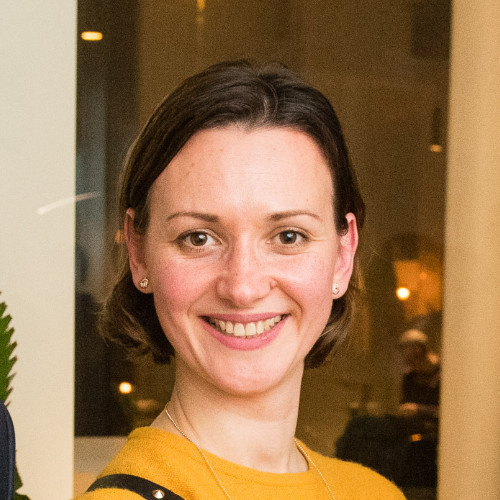
Insights & Opinions
Money 20/20
Tue, 11 Jun 2019

It’s the largest FinTech event in Europe attracting around 3000 participants from all over the region and combining a fair and conference experience, but what’s it really like to attend Amsterdam’s Money 20/20?
Last year I was unable to attend Money 20/20 and vblogged a summary of the event based on videos and reports, but it was so much better to be there in person this year as part of the FINTECH BELGIUM team.
My main goal in attending was to keep my eye locked firmly on industry trends and to get to know more payment service providers and understand their differences — as this is directly related to my project.
As a fintech startup, I could see the appeal of attending from the perspective of scaling up — meeting like-minded payment service providers, security and fraud prevention, money transfer companies etc. or connecting with big organisations like banks and platform companies looking to collaborate. The financial industry has finally accepted the intervention of technology into the space and the impact of the fast-growing fintech ecosystem. But this event made me realize that startups are not always looking for cooperation with banks and might grow organically and move cross-border with other partners instead of spending time on long corporate relationships with a big fish before getting a piece of a pie. Such strategies could make sense, but are not always obvious.
The Money 20/20 fair featured a huge number of booths with a variety of companies ranging from local startups to well-known global players. While some participants came in search of partners, others were looking for customers. Some were after brand expansion and awareness, and several because their CEO had sent them.
Surprisingly to me, not many were there to follow industry trends and very few seemed to know about the Payment Race Initiative, an experiment which I personally found super interesting. I was betting on a cash team, but they got unlucky with a flight delay on the last day and conceded to a mobile team.
The space was enormous, which made it difficult to move between areas, sometimes taking up to 20 minutes between venues and this meant I had to skip some sessions entirely.
I noticed a lot of half empty rooms, despite the big names on the stage, however the smaller workshops were full which was probably driven by attracting the right audience. Personally I didn’t find all the speakers impressive and often I found specific talks more interesting than the more general sessions.
For me, Money 20/20 was all about people — interesting conversations, networking and reconfiguring the importance of third sector into the global economy. Personally, I had several conversations with investors that helped me to understand what they look for in a business idea and how important self-awareness of strength and weaknesses in a team are. Collaborative management style and the ability to be a manager generalist is key for a successful execution.
I couldn’t resist sharing some insghts from the event on my favourite topic — payments!
· We are in the golden age of the payment industry with expectations of achieving industry revenue of $2 trillions by 2025. Value creation in the payment industry is outgrowing other areas of banking and leading to value-chain reconfigurations and stimulating business model changes.
· The split of the players in the payment industry:
· Digital wallets (google wallet, apple pay etc.) — practical, close to the consumers, but hard to earn money with.
· Payment solutions (PayPal, Klarna etc.) — have good revenue, but are hard to scale up
· Processing technology (Visa, Mastercard, Sia etc.) — historically have a strong infrastructure and used to be dominators of the market. Still have a good revenue but with upcoming disruption, they need to innovate as they are under attack.
· Collections players (Adyen, Stripe, iZettle etc.) — infrastructure builders, doing good in revenue but really need to have a big volume and that space is getting competitive.
· Regulatory change is the top challenge for issuers: processors point to regulation and the cost of innovation, followed by complexity of IT infrastructure and variety of the product. People in the industry are not aligned with a level of digital adoption, which is lead by the diverse needs between millennials / Gen Z and generation X /Y. Customer pool of Gen Z is not big enough to focus just on them, who have faster adoption with a small returns on revenue, however it’s strategically important for future growth. At the same time generation X/Y are the longest users of financial institutions and still bring in the biggest revenue, but have a low level of adoption. To split the attention and build the right strategy is challenging along with all technical needs to accelerate the global consolidation.
· Companies must implement quick testing of products. Payment is becoming a very technological driven business and Fintech startups driven by engineering are winning over big multinational company (banks).
· Volume is key in the payment segment which could be reached by smooth user experience rather than marketing. We are approaching the era where high marketing budget is a not a single guarantee of long-term success.
As someone with a deep respect for NGOs making a real impact in society and a big interest in the fintech industry, it was a real pleasure to cooperate with FINTECH BELGIUM — a powerhouse team whose honest cooperation is sure to bring the right people together and grow the industry. I really enjoyed my experience at Money 20/20, especially getting to know the other team members better. The event also helped me to broaden my network, meet new investors, keep up with the trends and listen to some fantastic speakers.



